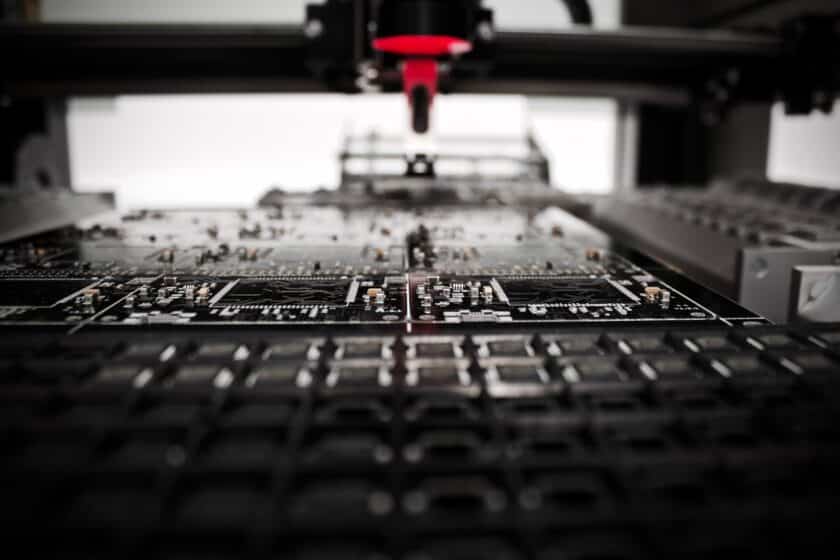The rise of artificial intelligence has been the investment theme of 2023. But there are other areas for investors to consider within this, particularly in the rapidly growing area of robotics, according to Tom Riley, portfolio manager, AXA Investment Managers.
Factories worldwide introduced a record number of industrial robots last year – a total of 553,052, an increase of 5% on 2021, according to the International Federation of Robotics (IFR). Between 2023 and 2026, the market is expected to grow by 7% per year.[1]
As a result, Riley sees significant opportunities for investors to harness both AI and robotics as a theme, with the sector set to grow exponentially in the next few years.
“Significant advances in AI coupled with labour markets that continue to be tight are ramping up the use of automation, as an ever-rising number of companies increasingly harness robotics to bolster efficiency, safety and precision,” he says.
“The automotive industry accounts for around a third of all robots in factories worldwide [2] and most car manufacturers use automation at nearly every stage of vehicle production, with battery manufacturing for electric vehicles proving to be a large new market for automation technologies.
“There are also exciting developments in the use of artificial intelligence to develop electric vehicles, as well as cars that can optimise fuel usage, navigate in real time, alert drivers to maintenance issues and even drive autonomously.”[3]
Riley says healthcare retail and other logistics can also take advantage of significant developments in the technology. Driving this, he says, are software, semiconductor and other key component providers.
“The use of robotics and automation can reduce costs and increase efficiency, quality and safety,” he says. “Connected or smart factories can gather and assess data which can optimise processes, helping manufacturers respond swiftly to changing demand, as well as recognising problems before they cause wider disruption.
“In healthcare, robotic surgery allows doctors to perform complex procedures with more precision and control, while AI can automate administrative work, help tailor medication to individual patients and play a role in drug development.”[4]
Changing demographics also have their part to play here, Riley says, as a growing proportion of older populations means governments need to find cheaper and more efficient ways of administering care.
“The pandemic boosted growth of e-commerce and meant many retailers and distributors needed to scale up their fulfilment of orders, increasingly turning to automation,” he says. “From Amazon to Ocado, companies are using warehouse robotics for managing orders, picking, sorting, packaging and more – and this market is forecast to almost double from $12.9bn in 2023 to near $25bn in 2028.”[5]
Driving these new opportunities across sectors are the software companies, semiconductor manufacturers and producers of other components for robotics and automation, including sensors and vision systems. But Riley says it’s not just a case of new innovations. Investment in new technologies is coming as manufacturing systems age, in the US in particular.
“Across manufacturing, US machinery is the amongst the oldest it has ever been,” he points out. “The average age of manufacturing capital stock is 11 years, according to 2022 data, compared to an average of eight years over the past several decades[6], indicating that upgrades are imminent.
“Industrial companies worldwide expect to spend heavily on robotics and automation, led by logistics and fulfilment firms.[7] But successful implementation is a concern among businesses, suggesting the most successful robotics and automation providers will be those that can help their industrial clients overcome the challenges.”
He says the combination of changing consumer and corporate demand, and the backing of new government policies like the Inflation Reduction Act (IRA), means a considerable potential boost for the robotics and automation sector.
“As demands for technology become more complex, we see potential investment opportunities in semiconductor firms such as Nvidia and Taiwan Semiconductor Manufacturing Company (TSMC) that innovate to keep pace with these changing needs,” he says. “Changing demographics and tight labour markets also feed into the case for growth in robotics and automation.
“Meanwhile sectors that are at the forefront of harnessing the benefits of AI, including transportation and healthcare, look set to continue to benefit as the use of robotics and automation becomes further embedded.
“We believe the robotics and automation sector is a significant growth market, and one where we are still in the fledgling stages of its development; not only in terms of its expansion potential but also in terms of the long-term investment opportunities it presents.”
[3]AI in the Automotive Industry: 20 Use Cases & Top Examples (itransition.com)
[4]The rise of artificial intelligence in healthcare applications – PMC (nih.gov) / Artificial intelligence in drug discovery and development – PMC (nih.gov)
[5]Warehouse Robots Market – Companies, Size & Industry Trends (mordorintelligence.com)
[6] US Bureau of Economic Analysis, Current cost average age at year-end of private equipment to industry, 30 September 2022
[7]Unlocking the industrial potential of robotics and automation | McKinsey
Main image: louis-reed-wSTCaQpiLtc-unsplash





























